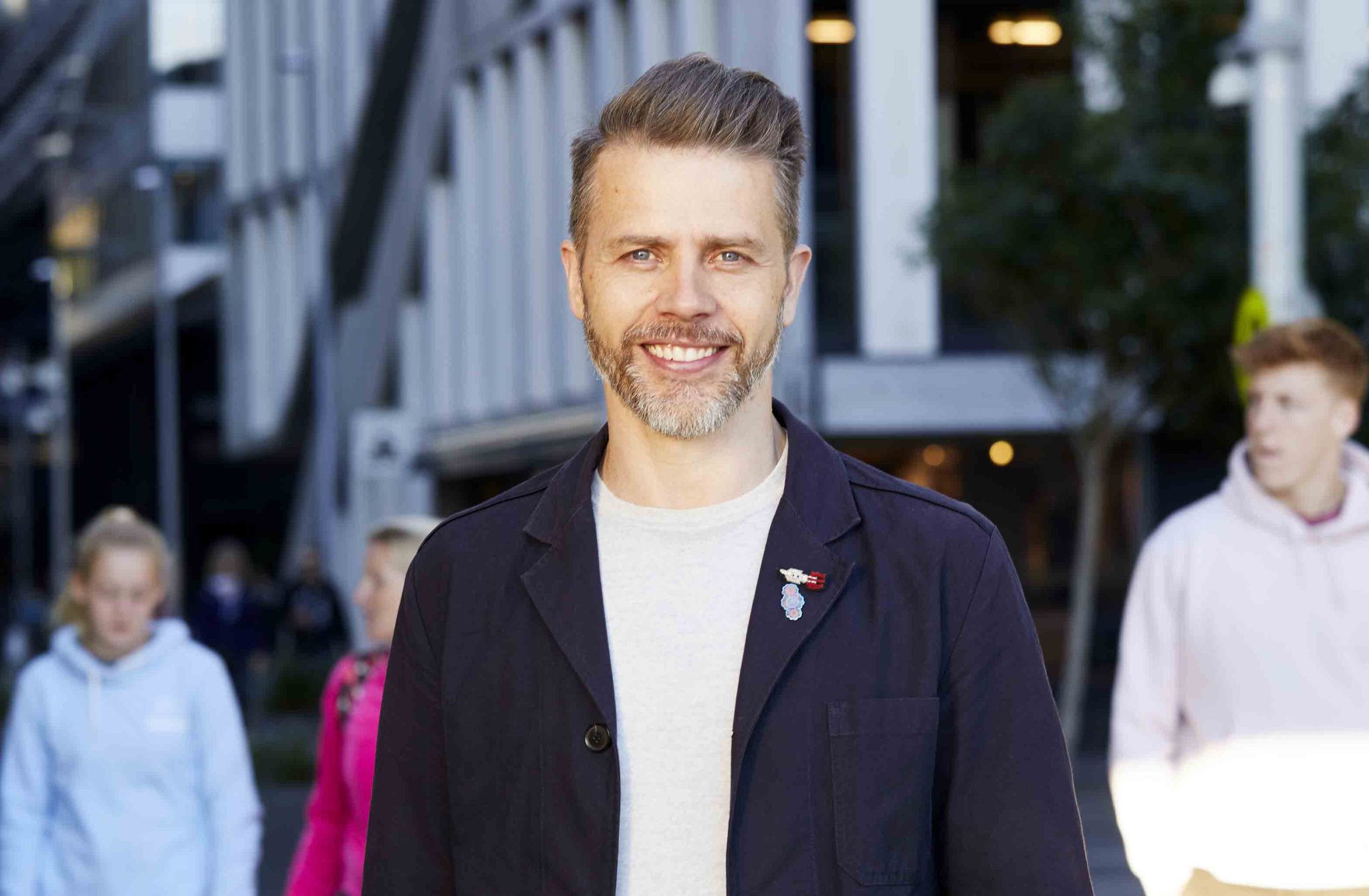
‘Eliminating inequity for women in architecture is terribly complex’: a chat with SJB’s Monica Edwards
‘Eliminating inequity for women in architecture is terribly complex’: a chat with SJB’s Monica Edwards
Share
Ahead of an appearance at the Business of Architecture and Design conference in Sydney on 11 November, Monica Edwards of SJB speaks to Australian Design Review editor Elisa Scarton about her experience as a woman in architecture and how gender equity can be achieved in the industry.
Architecture is often seen as a ‘man’s profession’. Do you think that perception is still pervasive?
We’ve had gender parity in university admissions for a few decades now. So that’s telling us that outside the profession, it is seen – and has been for a long time – as a career path that welcomes all genders. That said, architecture does operate in the male-dominated construction industry where we certainly witness a gender imbalance on construction sites and in some boardrooms.
Is the perception changing? I think the whole world is changing. The move towards diversity is seeing significant political and social changes – shaping the way we live and how we treat each other. Diversity has gained particular traction recently because of its links to innovation, framing an attractive business case that adds momentum to change. Gender is a good place to start when seeking diversity – it has the greatest visibility at 50 percent and once introduced, opens a space to appreciate difference in all people.
The research-based advocacy organisation Parlour is probably the best source for accurate data on how the profession is changing. Generally, we are seeing improvements in participation beyond mid-career, which was the classic hurdle point for many women. The impact of gendered roles is slowly waning, and – as an example – this is best expressed through flexibility no longer being a gendered issue but rather a workplace issue, ensuring all employees afford the benefits of a balanced life. Women are being offered career defining roles when working reduced hours or flexibly. Women are being offered senior roles within practice. Men are taking parental leave, working flexibly and all genders are more comfortable to challenge gender-based inappropriate behaviour. The profession is changing – we see an openness towards different styles of leadership and an appreciation that one-size doesn’t fit all. Many practices are moving beyond the parental hierarchy embedded in legislation and choose to treat parents equally. These changes collectively welcome diversity and improve on the representation of women.
But we still need to progress change. The face of the profession – the one seen by the public – is often the face of business ownership and this is predominantly male. The reasons for this are complex and multi-faceted, often embedded in the partnership model, but we must commit to take small steps to improve on women’s representation as business owners. And I’m hoping that many small steps lead to a very big change.
Can you share an example of how SJB has sought gender equity in its practice?
I think SJB’s best work in this space is certainly our Parental Leave Policy. The policy is well documented, and I love to hear it often used as short-hand for an industry benchmark.
Whilst the policy itself is impressive – I find the process that it took to get there more so. It started with generous leadership. At the time of developing the policy, based on ABS figures, workplace data revealed that close to 80 percent of SJB employees were likely to be parents within the next 5 years. The core leadership team recognised the need for a progressive approach and tabled a working solution to Associates for comment. This is a diverse group populated by different personalities, genders, age, backgrounds, ethnicity, experience and talent. All were impressed by the policy, however it did generate lively conversation and testing of scenarios with the clearest message being that it should be offered equally to all genders.
To their credit, the core leadership team listened to the feedback, checked the numbers and tweaked the policy for an equal approach to parental leave. The decision to widen the policy-making audience beyond the four equity owners made the parental leave policy richer; layered; tested. They were generous in trusting their team and this was returned with equally generous, thoughtful feedback, which prioritised all people over a single group. This space was pretty wonderful to be a part of and I know that these foundations were certainly set by the open-minded, compassionate core leadership team.
You are a member of the Male Champions of Change. In fact, you’ll be speaking at the Business of Architecture and Design conference seminar on gender inequity and the organisation itself. Why does the MCC’s strategy target men exclusively?
Ahhhh… This question… Quite possibly the biggest critique of the program.
I hope to speak for all women here when I say, we don’t need men. But we do need access to power. Now power is a word that makes your average architect cringe – it’s not in our lexicon – it makes the egalitarian in us uncomfortable. But recognition of power is critical for change. As a profession – despite being very comfortable with change in our design practise – we are weighted by our pronounced conservatism. We operate under archaic structures that reinforce power; power most frequently held by men, and in our profession, this is demonstrated through business ownership. Importantly – I don’t think it was ever intentional to exclude women from power; I just think that there are traditionally more structures in place to support men as they make their way towards business ownership. So, the program wants to tap into those with power and ask them to be personally responsible to act on changing these structures.
Elizabeth Broderick, the former sex discrimination commissioner, launched the first Male Champions of Change program in 2010. The rate of change catapulted membership and now the program impacts more than 10 percent of the Australian working population. When she started with the program, Elizabeth Broderick spoke of the enormous influence of the women’s movement predominantly inspired by female advocacy. Recognising the value of diversity, she argued that for the movement to progress, we must include all genders in the gender debate; seeking solutions, particularly from those with the capacity to make structural change. Hence, the program was developed to invite men into gender advocacy. It creates a space for them to confidently grasp the issues; recognise the impact they have on reinforcing the issues; and then asks them to put in place changes to mitigate the issues. It also encourages the male Champions to advocate for diversity alongside women; changing the system and not ‘fixing’ women. I often say that yes, they are Champions of Change, but more importantly, they become Champions that change.
How has your experience as a woman in architecture shaped your work life and design process?
This is a tricky question to respond to as my experience in the profession is far more complex than my gender alone. It’s steered by my personality, my experiences, my skills, my capability, my network. It is heavily influenced by the cultural and social norms of my generation and the architectural values embedded in my tertiary education. I’m wary of generalisations, so to help me articulate the role of gender in my career, I’ll compare my professional experiences with a male counterpart who is exactly the same as me.
Our early career was virtually identical except for two spheres: professional guidance and experience on construction sites. He was often mentored by men with access to power; and I was often mentored by women with access to less power. He learnt the struggles of the profession and I learnt the struggles of negotiating the profession. On the other hand, I think construction sites were easier for me – I was often ‘forgiven’ for being female with contractors investing time so I could make informed decisions, a luxury rarely afforded to men.
The difference between the male and female experience certainly became acute during the early-parenthood years. I have two children and decided to take a year off for both, returning to work three-days a week and then ramping up to four. For me, this time away from the profession led to the obvious outcome – those that remain stack-up project experience and those on leave, don’t. At this stage of a career, successful project experience equals leadership potential and so the aspiration is accumulation of good projects. On return to work, I had sponsors who recalled my work prior to parenthood, and they placed me forward for promising projects. Having champions was essential to limit the impact that a career break can have. But it is a two-way street – I would strongly urge those returning to work after a career break to be strategic to ensure their reduced availability does not lead to lesser quality projects or reduced opportunities for their personal attributes to thrive.
Now in my mid-career, projects as currency is less important. The difference that was deeply acute during the early-parenthood years is less so. We are all expected to network; run projects well; demonstrate expertise and proficiencies at an industry level; be profitable and innovative in business. Gender may play a role… given our awareness on the impact of bias, it is fair to question how it could not. But that said, I find it hard to identify the difference between me and my male counterpart – except of course the obvious – across the profession in all scales of practice, there are more male equity owners than female. I suspect this is an exponential impact of the early-parenthood years. It would be good to change this.
What should we be doing to eliminate gender inequality in architecture?
I am actually not seeking gender equality. Gender equality sees the equal value of all genders and I’d like to think that this is true – it’s a baseline that we all agree. I advocate for gender equity – I really want people to see difference in others; to check if that difference is fair across many scenarios; and if it’s not fair, then to do something about it. Equity is sometimes hard to grasp. A good example is giving a pair of glasses to a vision-impaired architect. Another is a stand-up sit-down desk, which allows individuals to adapt their working environment to best suit their productivity needs. Essentially, these minor changes recognise the individuality of the person and alters the setting so that everyone is operating at their best. This is equity.
Eliminating inequity for women in architecture is terribly complex with many not even seeing that inequity exists. Some include social expectations on the role of women, particularly in terms of caring; the distribution of opportunity; work life balance and availability; networks, particularly in a male-dominated industry; the exponential impact of leave and part-time work; access to mentors and sponsors; access to financial resources required for business ownership. Policy is progressing well providing a framework to address common challenges. But cultural change is slow. The life experiences we all bring to the table can collectively disable policy. So, for me, cultural change is the first step. This sounds huge – but culture is made up of individuals and so I would like all individuals to question how they can change. That said, you are only going to change if you see the need to change.
There is a fabulous tool in the Male Champions of Change toolbox developed in association with Chief Executive Women. It’s called the Leadership Shadow. It is mostly designed for leaders, but I also think it can be used on a wider audience. Effectively, it’s a 360 where an individual asks another to comment on what they say, act, prioritise and measure. By listening, the individual is able to map how they reinforce inequities, essentially uncovering their bias. Once this is known, they are better placed to know how they can change. Bias is another scary word – it’s dripping with shame and guilt (and sometimes even anger). I think if we all acknowledge that we all come with bias then we can all move on. I am likely to be as sexist as any male in my generation. It was the culture that we grew up in and the shorthand we developed. Now, as an adult, I can work on correcting these patterns in myself. And if I do it, and the person next to me does it, and the person next to them does it; we shall soon have cultural change.
Ultimately though, I want to see a world that moves away from generalisations when talking about people towards a world that sees individuals. This is true diversity.
The Business of Architecture and Design (BoAD) conference is at Sydney’s Parliament of NSW on 11 November.
Monica Edwards will be speaking at the seminar session Champions of Change alongside Male Champions of Change architect group convenor Dr Jess Murphy, Carter Williamson Architects principal Shaun Carter, Woods Bagot principal John Prentice and Bates Smart director Philip Vivian.
Don’t miss out. Buy your tickets now.
The inaugural BoAD is all about looking to the future. The architecture and design industry is evolving quickly and this conference has been designed to provide attendees with an agenda that will inform them of the changes that are taking place within the built environment – changes in technology, new business models and where investment is coming from and going to. It will provide business and practice leaders with key take-outs that can be applied to their planning whether they are leading a multinational or small local practice.
You Might also Like




















